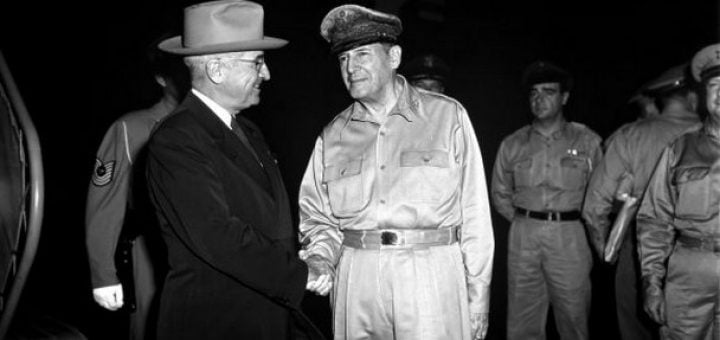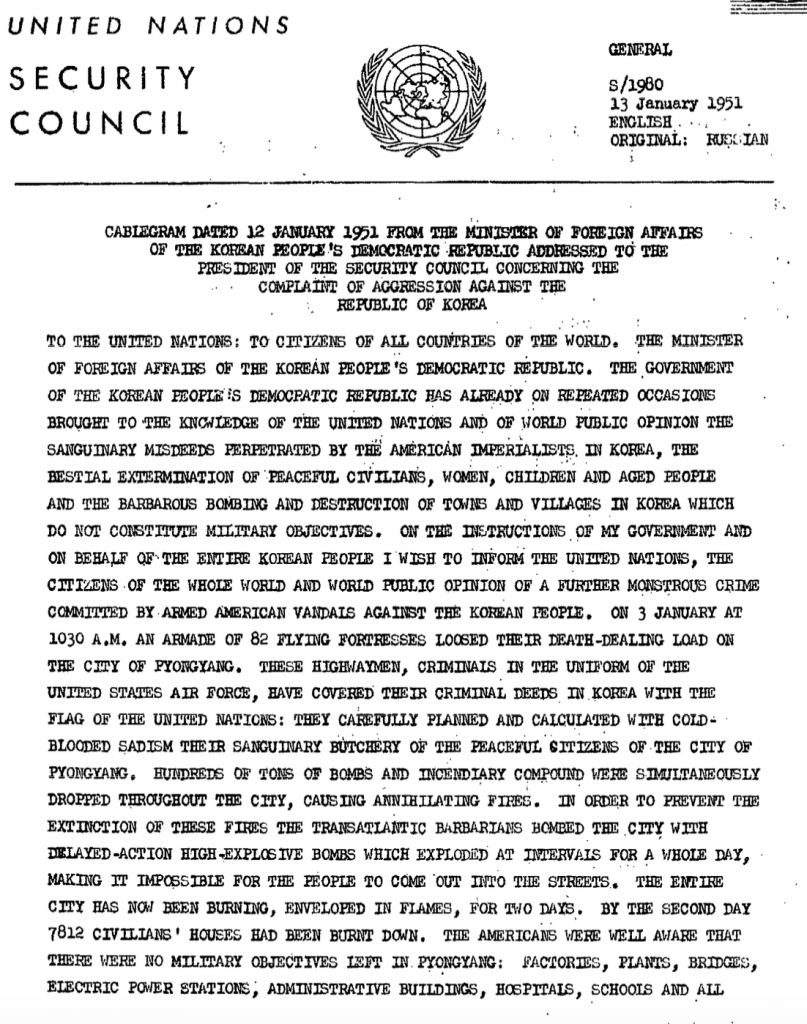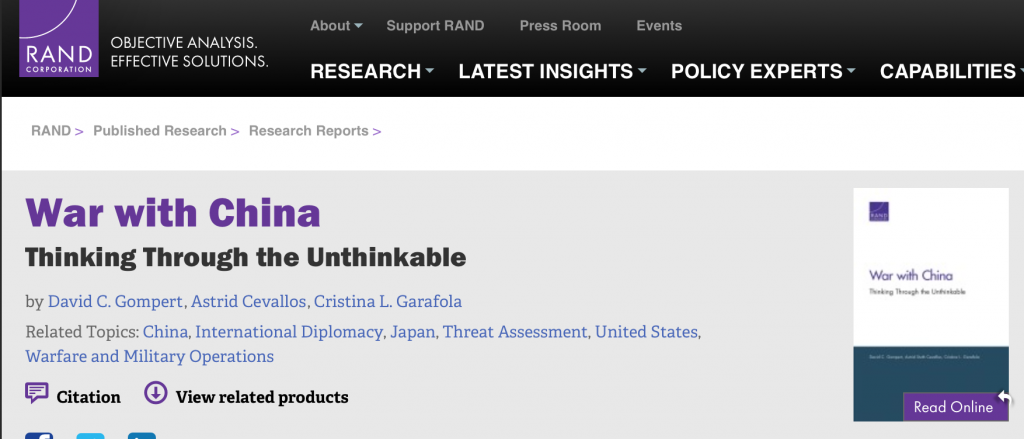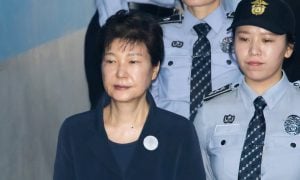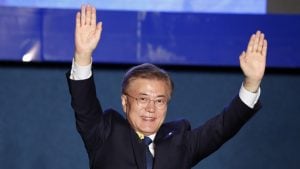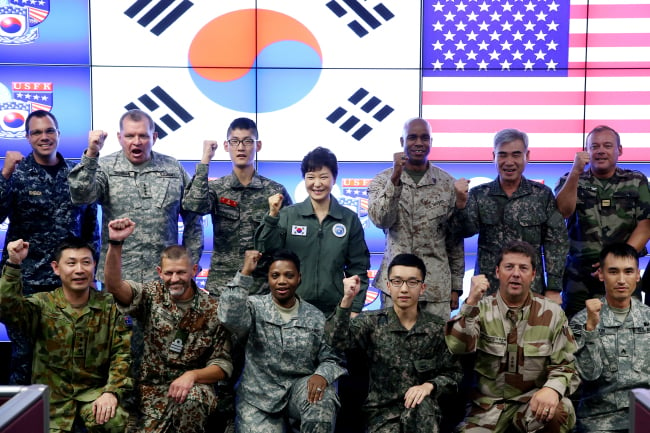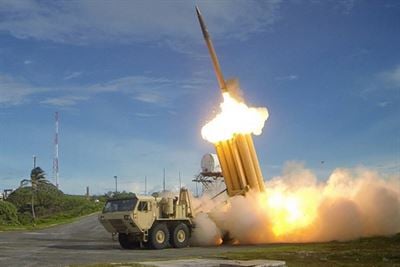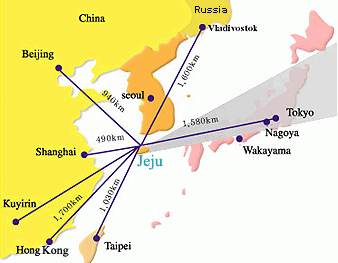By Prof Michel Chossudovsky Global Research, November 21, 2021
Original Link Here: America’s “Long War” against the Korean Nation – Global ResearchGlobal Research – Centre for Research on Globalization
All Global Research articles can be read in 51 languages by activating the “Translate Website” drop down menu on the top banner of our home page (Desktop version).
Visit and follow us on Instagram at @crg_globalresearch.
In this essay, I will be addressing the following issues:
- US war crimes committed against the Korean Nation (1950-53),
- Fire and Fury and the Nuclear Issue: From the Cold War to the Present
- The debate on Reunification and the Sunshine Movement
- The Candlelight Movement which led to the impeachment of president Park Guen hye
- The formulation of a North-South peace proposal involving the repeal of the ROK-US Combined Forces Command (CFC) under the OPCON (Operational Control) agreement
The text concludes with a section entitled:
Reunification and the Road Ahead: There is Only One Korean Nation.
The “real alliance” is that which unifies and reunites North and South Korea through dialogue against foreign intrusion and aggression.
The US is in a state of war against the entire Korean Nation. And what this requires is:
the holding of bilateral talks between the ROK and the DPRK with a view to signing an agreement which nullifies the Armistice Agreement of 1953 and which sets the terms of a bilateral “Peace Treaty”.
In turn, this agreement would set the stage for the exclusion of US military presence and the withdrawal of US forces stationed in South Korea.
1. US War Crimes committed against the Korean Nation (1950-53)
“Fire and Fury” was not invented by Donald Trump. It is a concept deeply embedded in US military doctrine. It has characterized US military interventions since the end of World War II.
What distinguishes Trump from his predecessors in the White House is his political narrative at the 2017 United Nations General Assembly.
President Harry Truman from the very outset of the Korean War (1950-53) was a firm advocate of “Fire and Fury” against the people of both North and South Korea.General Douglas MacArthur, who had actually carried out the atrocities directed against the Korean people, appeared before the US Senate and acknowledged the crimes committed against the Korean Nation:
“I have never seen such devastation,” the general told members of the Senate Armed Services and Foreign Relations committees. At that time, in May 1951, the Korean War was less than a year old. Casualties, he estimated, were already north of 1 million.
“I have seen, I guess, as much blood and disaster as any living man,” he added, ” (quoted by the Washington Post, August 10, 2017)
Confirmed by US military documents, both the People’s Republic of China and the Democratic People’s Republic of Korea have been threatened with nuclear war for sixty-seven years.
In 1950, Chinese volunteer forces dispatched by the People’s Republic of China were firmly behind North Korea against US aggression.
China’s act of solidarity with the Democratic People’s Republic of Korea (DPRK) was carried out barely a few months after the founding of the PRC on October 1, 1949.
Truman had contemplated the use of nuclear weapons against both China and North Korea, specifically as a means to repeal the Chinese Volunteer People’s Army (VPA) which had been dispatched to fight alongside North Korean forces. [Chinese Volunteer People’s Army, 中國人民志願軍; Zhōngguó Rénmín Zhìyuàn Jūn].
It is important to stress that US military action directed against the DPRK was part of a broader Cold War military agenda against the PRC and the Soviet Union, the objective of which was ultimately to undermine and destroy socialism.
Extensive war crimes were committed against the Korean Nation in the course of the Korean war and its aftermath.
Every single family in North Korea has lost a loved one in the course of the Korean War.
In comparison, during the Second World War the United Kingdom lost 0.94% of its population, France lost 1.35%, China lost 1.89% and the US lost 0.32%. During the Korean war, North Korea lost 30% of its population.
These figures of civilian deaths in North Korea should also be compared to those compiled for Iraq by the Lancet Study (Johns Hopkins School of Public Health). The Lancet study estimated a total of 655,000 Iraqi civilian deaths, in the three years following the US-led invasion (March 2003 – June 2006).
The US never apologized for having killed up to 30 percent of North Korea’s population. Quite the opposite. The main thrust of US foreign policy has been to demonize the victims of US-led wars.
There were no war reparations. The issue of US crimes against the people of Korea was never addressed by the international community. And today, the DPRK is tagged by the Western media as a threat to the security of the United States.
For more than half a century, Washington has contributed to the political isolation and impoverishment of North Korea. Moreover, US-sponsored sanctions on Pyongyang have contributed to destabilizing the country’s economy.
North Korea has been protrayed as part of an “axis of evil”. For what?
The unspoken victim of US military aggression, the DPRK is portrayed as a failed war-mongering “Rogue State”, a “State sponsor of terrorism” and a “threat to World peace”. In the West but also in south Korea, these stylized accusations become part of a consensus, which we dare not question.
The Lie becomes the Truth. North Korea is heralded as a threat. America is not the aggressor but “the victim”.
Washington’s intent from the very outset was to destroy North Korea and demonize an entire nation. The US has also stood in the way of the reunification of North and South Korea.
People across America should put politics aside and relate to the suffering and hardships of the people of North Korea. War veteran Brian Willson provides a moving assessment of the plight of the North Korean people:
Everyone I talked with, dozens and dozens of folks, lost one if not many more family members during the war, especially from the continuous bombing, much of it incendiary and napalm, deliberately dropped on virtually every space in the country. “Every means of communication, every installation, factory, city, and village” was ordered bombed by General MacArthur in the fall of 1950. It never stopped until the day of the armistice on July 27, 1953. The pained memories of people are still obvious, and their anger at “America” is often expressed, though they were very welcoming and gracious to me. Ten million Korean families remain permanently separated from each other due to the military patrolled and fenced dividing line spanning 150 miles across the entire Peninsula.
Let us make it very clear here for western readers. North Korea was virtually totally destroyed during the “Korean War.” U.S. General Douglas MacArthur’s architect for the criminal air campaign was Strategic Air Command head General Curtis LeMay who had proudly conducted the earlier March 10 – August 15, 1945 continuous incendiary bombings of Japan that had destroyed 63 major cities and murdered a million citizens. (The deadly Atomic bombings actually killed far fewer people.).Eight years later, after destroying North Korea’s 78 cities and thousands of her villages, and killing countless numbers of her civilians, LeMay remarked, “Over a period of three years or so we killed off – what – twenty percent of the population.”It is now believed that the population north of the imposed 38th Parallel lost nearly a third its population of 8 – 9 million people during the 37-month long “hot” war, 1950 – 1953, perhaps an unprecedented percentage of mortality suffered by one nation due to the belligerance of another.
Virtually every person wanted to know what I thought of Bush’s recent accusation of North Korea as part of an “axis of evil.” I shared with them my own outrage and fears, and they seemed relieved to know that not all “Americans” are so cruel and bellicose. As with people in so many other nations with whom the U.S. has treated with hostility, they simply cannot understand why the U.S. is so obsessed with them.” (Brian Willson, Korea and the Axis of Evil, Global Research, October 12, 2006 emphasis added)
The Nature of US Atrocities against the People of Korea
The DPRK’s Foreign Minister’s Cable to the United Nations Security Council confirmed the nature of the atrocities committed by the US against the people of North Korea, acting under the banner of the United Nations:
See original below. [original text in Korean]
“ON JANUARY 3 AT 10:30 AM, AN ARMADE OF 82 FLYING FORTRESSES LOOSED THEIR DEATH-DEALING LOAD ON THE CITY OF PYONGYANG. …
HUNDREDS OF TONS OF BOMBS AND INCENDIARY COMPOUND WERE SIMULTANEOUSLY DROPPED THROUGHOUT THE CITY, CAUSING ANNIHILATING FIRES. IN ORDER TO PREVENT THE EXTINCTION OF THESE FIRES, THE TRANS-ATLANTIC BARBARIANS BOMBED THE CITY WITH DELAYED-ACTION HIGH-EXPLOSIVE BOMBS WHICH EXPLODED AT INTERVALS THROUGHOUT FOR A WHOLE DAY, MAKING IT IMPOSSIBLE FOR THE PEOPLE TO COME OUT ONTO THE STREETS. THE ENTIRE CITY HAS NOW BEEN BURNING, ENVELOPED IN FLAMES, FOR TWO DAYS. BY THE SECOND DAY 7,812 CIVILIANS’ HOUSES HAD BEEN BURNT DOWN. THE AMERICANS WERE WELL AWARE THAT THERE WERE NO MILITARY OBJECTIVES LEFT IN PYONGYANG. …
THE NUMBER OF INHABITANTS OF PYONGYANG KILLED BY BOMB SPLINTERS, BURNT ALIVE AND SUFFOCATED BY SMOKE IS INCALCULABLE, SINCE NO COMPUTATION IS POSSIBLE. SOME FIFTY THOUSAND INHABITANTS REMAIN IN THE CITY, WHICH BEFORE THE WAR HAD A POPULATION OF FIVE HUNDRED THOUSAND.”
It was all for a good cause: the fight against “evil communism”. The doctrine of fighting communism acted as a powerful ideological instrument during the Cold War era.
Our message to US military servicemen and women at all levels of the military hierarchy.
Reverse the course of History. Abandon the Battlefield, Refuse to Fight!
For complete text of the cable addressed to the UN Security Council click UN Repository.
2. “Fire and Fury” and the Nuclear Issue:
From the Cold War to the Present
In the post Cold War era, under Donald Trump’s “Fire and Fury”, nuclear war directed against Russia, China, North Korea and Iran is “On the Table”.
What distinguishes the October 1962 Missile Crisis to Today’s Realities:
1. Today’s president Donald Trump does not have the foggiest idea as to the consequences of nuclear war.
2. Communication today between the White House and the Kremlin is at an all time low. In contrast, in October 1962, the leaders on both sides, namely John F. Kennedy and Nikita S. Khrushchev were accutely aware of the dangers of nuclear annihilation. They collaborated with a view to avoiding the unthinkable.
3. The nuclear doctrine was entirely different during the Cold War. Both Washington and Moscow understood the realities of mutually assured destruction. Today, tactical nuclear weapons with an explosive capacity (yield) of one third to six times a Hiroshima bomb are categorized by the Pentagon as “harmless to civilians because the explosion is underground”.
4. A one trillion ++ nuclear weapons program, first launched under Obama, is ongoing.
5. Today’s thermonuclear bombs are more than 100 times more powerful and destructive than a Hiroshima bomb. Both the US and Russia have several thousand nuclear weapons deployed.
Moreover, an all-out war against China is currently on the drawing board of the Pentagon as outlined by a RAND Corporation Report commissioned by the US Army.
Washington is actively involved in creating divisions between China and its neighbours including the DPRK and the ROK.
The objective is to draw South East Asia and the Far East into a protracted military conflict by creating divisions between China and ASEAN countries, most of which are the victims of Western colonialism and US military aggression: extensive crimes against humanity have been committed against Vietnam, Cambodia, Korea, the Philippines, Indonesia. In a bitter irony, these countries are now military allies of the United States.
Who Is the Aggressor?
The Soviet Union had tested its first atomic bomb on August 29, 1949 in response to Washington’s design to wage nuclear war against the USSR, first formulated in September 1945.
According to analysts, the Soviet atomic bomb was instrumental in the Truman administration’s decision to eventually stall US nuclear war preparations against North Korea and China. The project was scrapped in June 1951.
In March 1949, President Truman approved National Security Council Memorandum 8/2, which identified the entire Korean peninsula “as an area where the principles of democracy were being matched against those of Communism.” (see P. K. Rose, Two Strategic Intelligence Mistakes in Korea, 1950, Perceptions and Reality, CIA Library, Apr 14, 2007.)
The NSC Memorandum 8/2 paved the way for the June 1949 guerrilla attacks on the DPRK:
“Inquiry uncovers secret of series of attacks by South on North. South Korean troops attacked the North a year before the Korean war broke out, researchers have claimed in the latest disturbing revelation about the conflict which almost led to global war. More than 250 guerrillas from the South are said to have launched an attack on North Korean villages along the east coast in June 1949. The incident has been confirmed by a South Korean army official. (John Gittings, Martin Kettle, The Guardian, 17 January 2000)
Washington’s objective was to extend its geopolitical zone of influence over the entire Korean Nation, with a view to taking over all the Korean colonial territories which had been annexed to the Japanese Empire in 1910. The Korean war was also directed against the People’s Republic of China as confirmed by president Truman’s November 1950 statements (see transcript below), which intimated in no uncertain terms that the atomic bomb was intended to be used against the People’s Republic of China.
According to military analyst Carl A. Posey in Air and Space Magazine:
In late November [1950], communist China began to turn over its cards. It had already covertly sent troops into North Korea. …
With the Chinese intervention, the United States confronted a hard truth: Threatening a nuclear attack would not be enough to win the war. It was as if the Chinese hadn’t noticed—or, worse, weren’t impressed by—the atomic-capable B-29s waiting at Guam.
President Truman raised the ante. At a November press conference [1950], he told reporters he would take whatever steps were necessary to win in Korea, including the use of nuclear weapons.Those weapons, he added, would be controlled by military commanders in the field.
In April of the next year, Truman put the finishing touches on Korea’s nuclear war. He allowed nine nuclear bombs with fissile cores to be transferred into Air Force custody and transported to Okinawa. Truman also authorized another deployment of atomic-capable B-29s to Okinawa. Strategic Air Command set up a command-and-control team in Tokyo.
This spate of atomic diplomacy coincided with the end of the role played by Douglas MacArthur. … Truman replaced him with General Matthew Ridgway, who was given “qualified authority” to use the bombs if he felt he had to.
In October, there would be an epilogue of sorts to the Korean nuclear war. Operation Hudson Harbor would conduct several mock atomic bombing runs with dummy or conventional bombs across the war zone. Called “terrifying” by some historians, Hudson Harbor merely tested the complex nuclear-strike machinery, as the Strategic Air Command had been doing for years over American cities.
But the nuclear Korean war had already ended. In June 1951, the atomic-capable B-29s flew home, carrying their special weapons with them. (emphasis added)
Truman’s decision to contemplate the use of nuclear weapons is confirmed in Truman’s historic November 30, 1950 Press Conference.
(Excerpts below, click to access complete transcript)

THE PRESIDENT. We will take whatever steps are necessary to meet the military situation, just as we always have.
[12.] Q. Will that include the atomic bomb ?
THE PRESIDENT, That includes every weapon that we have.
Q. Mr. President, you said “every weapon that we have.” Does that mean that there is active consideration of the use of the atomic bomb?
THE PRESIDENT. There has always been active consideration of its use. I don’t want to see it used. It is a terrible weapon, and it should not be used on innocent men, women, and children who have nothing whatever to do with this military aggression. That happens when it is used.3
3Later the same day the White House issued the following press release:
“The President wants to make it certain that there is no misinterpretation of his answers m questions at his press conference today about the use of the atom bomb. Naturally, there has been consideration of this subject since the outbreak of the hostilities in Korea, just as there is consideration of the use of all military weapons whenever our forces are in combat.
“Consideration of the use of any weapon is always implicit in the very possession of that weapon.
“However, it should be emphasized, that, by law, only the President can authorize the use of the atom bomb, and no such authorization has been given. If and when such authorization should be given, the military commander in the field would have charge of the tactical delivery of the weapon.
“In brief, the replies to the questions at today’s press conference do not represent any change in this situation.”
…
Q. Mr. President, I wonder if we could retrace that reference to the atom bomb? Did we understand you clearly that the use of the atomic bomb is under active consideration?
THE PRESIDENT. Always has been. It is one of our weapons.
Q. Does that mean, Mr. President, use against military objectives, or civilian–
THE PRESIDENT. It’s a matter that the military people will have to decide. I’m not a military authority that passes on those things. [refutes his earlier statement on not using it “against civilians”]
Q. Mr. President, perhaps it would be better if we are allowed to quote your remarks on that directly?
THE PRESIDENT. I don’t think–I don’t think that is necessary.
Q. Mr. President, you said this depends on United Nations action. Does that mean that we wouldn’t use the atomic bomb except on a United Nations authorization ?
THE PRESIDENT. No, it doesn’t mean that at all. The action against Communist China depends on the action of the United Nations. The military commander in the field will have charge of the use of the weapons, as he always has. [intimates that the use of atomic bomb is “against Communist China”]
[15.] Q. Mr. President, how dose are we to all-out mobilization.
THE PRESIDENT. Depends on how this matter we are faced with now works out.
[16.] Q. Mr. President, will the United Nations decide whether the Manchurian border is crossed, either with bombing planes or–
THE PRESIDENT. The resolution that is now pending before the United Nations will answer that question.
Q. Or with troops? … (emphasis added
In December 1949, a detailed top secret National Security Council (NSC) report was addressed to president Truman:
“Development of sufficient military power in selected non-Communist nations of Asia to maintain internal security and to prevent further encroachment by communism….
Gradual reduction and eventual elimination of the preponderant power and influence of the USSR in Asia
… The United States should continue to provide for the extension of political support and economic, technical, military and other assistance to the democratically-elected Government of the Republic of Korea.
(NSC top secret report, December 1949)
Beneath the facade of spreading democracy, Washington’s ultimate objective was to establish a proxy state in South Korea.
America’s appointee Sygman Rhee was flown into Seoul in October 1945, in General Douglas MacArthur’s personal airplane, Rhee became president in 1948, with a mandate to curb political dissent including the arrest, torture and assassination of thousands of alleged Communist opponents.
Mutually Assured Destruction (MAD)
The doctrine of mutually assured destruction (MAD) evolved in the wake of the launching of the Soviet atom bomb in August 1949. Prior to that, the US resolve was to use nukes on a first strike basis against the Soviet Union, the People’s Republic of China and the Democratic People’s Republic of Korea (DPRK).
However, at the outset of the Korean war in 1950, confirmed by Truman’s statements, no clearcut distinction was made between a nuclear weapon and a conventional weapon. The Truman administration’s nuclear doctrine consisted in using nuclear weapons within the framework of a conventional war theater.
The concept of Mutually Assured Destruction (MAD) which characterized the Cold War was based on the recognition that the use of nuclear weapons “by two or more opposing sides would cause the complete annihilation of both the attacker and the defender”.
China was first threatened by the US with nuclear war in 1950, a year after the inauguration of the People’s Republic of China. Some 14 years later in October 1964, China tested its first 16-ton nuclear bomb.
3. The Candlelight Movement,
The Demilitarization of the Korean Peninsula
The 1987 June Democratic Uprising was a nationwide grassroots movement in the Republic of Korea (ROK) directed against the military regime of president Chun Doo-hwan, a ROK army general who came to power in 1979 following a military coup and the assassination of President General Park Chung-hee.
Chun Doo-hwan (1979-1987) had announced the appointment of a new military dictator: Army General Roh Tae-woo as the next unelected president of the ROK.
This self-proclaimed decision in defiance of public sentiment was conducive to the June 1987 mass movement in support of constitutional reform with a view to instating the holding of direct presidential elections. While the June movement put an end to unelected military rule, what was achieved was a military-civilian transition whereby General Roh-Tae-woo, was instated through the conduct of presidential elections. (In 1996, Roh was sentenced to more than 22 years in prison on bribery, mutiny and sedition charges.)
While the June movement was a landmark, it did not modify the social hierarchy, the corrupt political and corporate networks, the authoritarian nature of the leading corporate giants (Chaebols), not to mention the shadow decision making processes within the military and intelligence apparatus, conducted in liaison with Washington.
Thirty years later, the irony of history is that another grassroots protest movement, The Candle Light Movement in part inspired by the 1987 June Uprising successfully sought the impeachment of president Park Guen-hye, daughter of General Park Chung-hee who ruled the ROK from 1963 to 1979.
According to media reports, the mega protests gained impetus on November 12, 2016 with one million protesters, rising to 1.9 million on November 19, and culminating on December 3, with 2.3 million. “The 2.3 million mega-protest … was a critical turning point that halted Park’s last attempt to escape impeachment.”
The government backlashed on grassroots organizations and the labor movement. In turn, under Mrs. Park’s presidency, the neocolonial relationship exerted by the US was reinforced with particular emphasis on expanded militarization.
Rep. Lee Seok-ki of the United Progressive Party (UPP) was accused without evidence of “plotting to overthrow the ROK government” of president Park Guen hye.
That government was indeed overthrown, by the people’s Candlelight movement, by a democratic process which was ratified by the constitutional court.
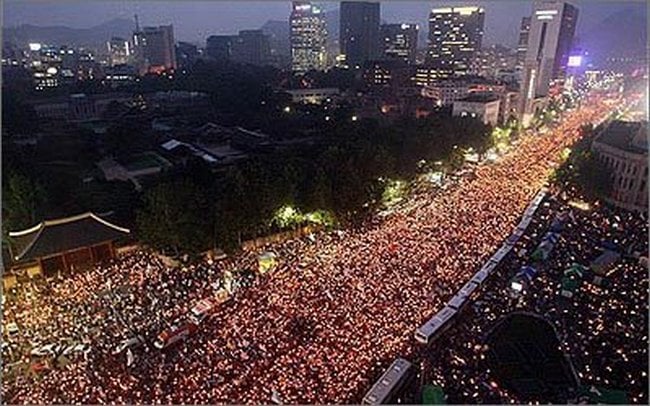
Convicted on charges of bribery, corruption, abuse of power, coercion and leaking government secrets (in a total of 18 cases), Park Guen-hye faces between 10 years to life in prison.
Bear in mind, these accusations are but the tip of the iceberg, they do not include Ms. Park’s orders to arbitrarily arrest her political opponents and repeal fundamental civil rights.
In a bitter irony, it was the constitutional court under pressure from the Conservative Party, which ratified president Park’s baseless accusations against Rep. Lee Seok-ki, which led to his imprisonment.
That erroneous decision by the Constitutional Court, which was in part upheld by the Supreme Court, invoking the 1948 National Security Act must be challenged and annulled.
Park Geun-hye at the Seoul central district court in South Korea. Photograph: Xinhua/Rex/Shutterstock
4. The Sunshine Policy
The Sunshine policy initially established under the government of Kim Dae-jung with a view to seeking North-South cooperation had already been abolished by Park Guen-hye’s predecessor president Lee Myung-bak (2008-2013). In turn, this period was marked by a heightened atmosphere of confrontation between North and South, marked by successive war games.
The administrations of both presidents Lee and Park were largely instrumental in repealing the Sunshine Policy which had been actively pursued during the Roh Moo-hyun administration (2003-2008), with increased public sentiment in favor of reunification of North and South Korea.
Sunshine 2.0. The Demilitarization of the Korean Peninsula
The legacy of history is fundamental: From the outset in 1945 as well as in the wake of the Korean war (1950-53), US interference and military presence in the ROK has been the main obstacle to the pursuit of democracy and national sovereignty.
Washington has consistently played a role in ROK politics, with a view to ensuring its hegemonic objectives in East Asia. The impeached president Mrs. Park served as an instrument of the US administration.
Will the popular movement against the impeached president prevail?
It was conducive to the conduct of new presidential elections leading to the election of Moon Jae-in as president of the ROK.
Supported by the Candle Light movement, Moon Jae-in’s presidency potentially constitutes a watershed, a political as well as geopolitical landmark, an avenue towards national sovereignty in defiance of US interference, a potential break with a foregone era of authoritarian rule.
President Moon Jae-in had worked closely with president Roh Moo-hyun as his chef de cabinet. He has confirmed his unbending commitment in favor of dialogue and cooperation with Pyongyang, under what is being dubbed the Sunshine 2.0 Policy, while also maintaining the ROK’s relationship with the US.
While President Moon Jae-in (left) is firmly opposed to the DPRK’s nuclear program, he nonetheless took a firm stance against the deployment of the US-supplied Terminal High-Altitude Area Defence Missile Defence System (THAAD).
In recent developments, the ROK Defense Ministry acting behind his back took the initiative (May 30, 2017) of bringing in four more launchers for the THAAD missile system. “President Moon said that it’s ‘very shocking’ after receiving a report” on the incident from his national security director.” (Morningstar, May 30, 2017)
President Moon’s commitment to cooperation with North Korea coupled with demilitarization, will require redefining the ROK-US relationship in military affairs. This is the crucial issue.
The World is at a dangerous crossroads: How will the policies of President Moon’s administration affect the broader East Asia geopolitical context marked by US threats of military action (including the use of nuclear weapons) not only against North Korea but also against China and Russia?
In the present context, the US has de facto control over ROK foreign policy as well as North-South Korea relations. Under the OPCON agreement, the Pentagon controls the command structure of the ROK armed forces.
Ultimately this is what has to be addressed with a view to establishing a lasting peace on the Korean peninsula and the broader East Asian region.
5. The Repeal of the ROK-US Combined Forces Command (CFC)
Towards a Bilateral North-South Peace Agreement
In 2014, the government of President Park Geun-hye postponed the repeal of the OPCON (Operational Control) agreement “until the mid-2020s”. What this signified is that “in the event of conflict” all ROK forces would be under the command of a US General appointed by the Pentagon, rather than under that of the ROK President and Commander in Chief.
It goes without saying that national sovereignty cannot reasonably be achieved without the annulment of the OPCON agreement as well as the ROK – US Combined Forces Command (CFC) structure.
As we recall, in 1978 a bi-national Republic of Korea – United States Combined Forces Command (CFC), was created under the presidency of General Park (military dictator and father of impeached president Park Guen-hye). In substance, this was a change in labels in relation to the so-called UN Command.
“Ever since the Korean War, the allies have agreed that the American four-star would be in “Operational Control” (OPCON) of both ROK and US military forces in wartime …. Before 1978, this was accomplished through the United Nations Command. Since then it has been the CFC [US Combined Forces Command (CFC) structure]. (Brookings Institute)
Moreover, the Command of the US General under the renegotiated OPCON (2014) remains fully operational inasmuch as the 1953 Armistice (which legally constitutes a temporary ceasefire) is not replaced by a peace treaty.
The 1953 Armistice Agreement
What underlies the 1953 Armistice Agreement is that one of the warring parties, namely the US has consistently threatened to wage war on the DPRK for more than 60 years.
The US has on countless occasions violated the Armistice Agreement. It has remained on a war footing. Casually ignored by the Western media and the international community, the US has actively deployed nuclear weapons targeted at North Korea for more than half a century in violation of article 13(b) of the Armistice agreement. More recently it has deployed the so-called THAAD missiles largely directed against China and Russia.
The US is still at war with North Korea. The armistice agreement signed in July 1953 –which legally constitutes a “temporary ceasefire” between the warring parties (US, North Korea and China’s Volunteer Army)– must be rescinded through the signing of a long-lasting peace agreement.
The US has not only violated the armistice agreement, it has consistently refused to enter into peace negotiations with Pyongyang, with a view to maintaining its military presence in South Korea as well as shunting a process of normalization and cooperation between the ROK and the DPRK.
If one of the signatories of the Armistice refuses to sign a Peace Agreement, what should be contemplated is the formulation of a comprehensive Bilateral North-South Peace Agreement, which would de facto lead to rescinding the 1953 armistice.
What should be sought is that the “state of war” between the US and the DPRK (which prevails under the armistice agreement) be in a sense “side-tracked” and annulled by the signing of a comprehensive bilateral North-South peace agreement, coupled with cooperation and interchange.
This proposed far-reaching agreement between Seoul and Pyongyang would assert peace on the Korean peninsula –failing the signing of a peace agreement between the signatories of the 1953 Armistice agreement.
The legal formulation of this bilateral entente is crucial. The bilateral arrangement would in effect bypass Washington’s refusal. It would establish the basis of peace on the Korean peninsula, without foreign intervention, namely without Washington dictating its conditions. It would require the concurrent withdrawal of US troops from the ROK and the repeal of the OPCON agreement.
Bear in mind, the US was involved in the de facto abrogation of paragraph 13(d) of the Armistice agreement, which forecloses the parties from entering new weapons into Korea. In 1956, Washington brought in and installed nuclear weapons facilities into South Korea. In so doing, the U.S. not only abrogated paragraph 13(d), it abrogated the entire Armistice agreement through the deployment of US troops and weapons systems in the ROK.
Moreover, it should be noted that the militarization of the ROK under the OPCOM agreement, including the development of new military bases, is also largely intent upon using the Korean peninsula as a military launchpad threatening both China and Russia. Under OPCOM, “in the case of war”, the entire force of the ROK would be mobilized under US command against China or Russia.
The THAAD missiles are deployed in South Korea, against China, Russia and North Korea. Washington states that THAAD is solely intended as a Missile Shield against North Korea.
Similarly, the Jeju island military base is largely intended to threaten China.
THAAD System
The Jeju island military base is also directed against China.
Less than 500km from Shanghai
Moreover, Washington is intent upon creating political divisions in East Asia not only between the ROK and the DPRK but also between North Korea and China, with a view to ultimately isolating the DPRK.
In a bitter irony, US military facilities in the ROK (including Jeju Island) are being used to threaten China as part of a process of military encirclement. Needless to say, permanent peace on the Korean peninsula as well as in the broader East Asia region as defined under a bilateral North-South agreement would require the repeal of both the Armistice agreement as well as OPCOM, including the withdrawal of US troops from the ROK.
It is important that the bilateral peace talks between the ROK with DPRK under the helm of President Moon Jae-in be conducted without the participation or interference of outside parties. These discussions must address the withdrawal of all US occupation forces as well as the removal of economic sanctions directed against North Korea.
The exclusion of US military presence and the withdrawal of the 28,500 occupation forces should be a sine qua non requirement of a bilateral ROK-DPRK Peace Treaty.
6. Reunification and the Road Ahead.
There Is Only One Korean Nation
America’s neo-colonial practice applied both prior and in the post World War period has been geared towards weakening the nation state. Washington seeks through military and non-military means the partition and fracture of independent countries (eg. Yugoslavia, Czechoslovakia, Central America, Iraq, Syria, Sudan). This foreign policy agenda focussing on fracture and partition also applies to Korea.
There is only one Korean Nation. Washington opposes reunification because a united Korean Nation would weaken US hegemony in East Asia.
Reunification would create a competing industrial and military power and nation state (with advanced technological and scientific capabilities) which would assert its sovereignty, establish trade relations with neighbouring countries (including Russia and China) without the interference of Washington.
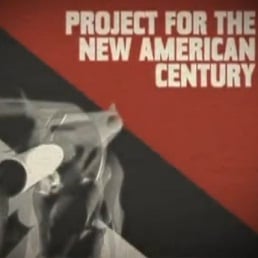
It is worth noting in this regard, that US foreign policy and military planners have already established their own scenario of “reunification” predicated on maintaining US occupation troops in Korea. Similarly, what is envisaged by Washington is a framework which would enable “foreign investors” to penetrate and pillage the North Korean economy.
Washington’s objective is to impose the terms of Korea’s reunification. The Neocons’ “Project for a New American Century” (PNAC) published in 2000 had intimated that in a “post unification scenario”, the number of US troops (currently at 28,500) should be increased and that US military presence should be extended to North Korea.
In a reunified Korea, the stated military mandate of the US garrison would be to implement so-called “stability operations in North Korea”:
While Korea unification might call for the reduction in American presence on the peninsula and a transformation of U.S. force posture in Korea, the changes would really reflect a change in their mission – and changing technological realities – not the termination of their mission. Moreover, in any realistic post-unification scenario, U.S. forces are likely to have some role in stability operations in North Korea.
It is premature to speculate on the precise size and composition of a post-unification U.S. presence in Korea, but it is not too early to recognize that the presence of American forces in Korea serves a larger and longer-range strategic purpose. For the present, any reduction in capabilities of the current U.S. garrison on the peninsula would be unwise. If anything, there is a need to bolster them, especially with respect to their ability to defend against missile attacks and to limit the effects of North Korea’s massive artillery capability. In time, or with unification, the structure of these units will change and their manpower levels fluctuate, but U.S. presence in this corner of Asia should continue. 36 (PNAC, Rebuilding America`s Defenses, Strategy, Forces and Resources for a New Century, p. 18, emphasis added)
Washington’s intentions are crystal clear.
It should be understood that a US led war against North Korea would engulf the entire Korean nation.
The US sponsored state of war is directed against both North and South Korea. It is characterised by persistent military threats (including the use of nuclear weapons) against the DPRK.
It also threatens the ROK which has been under US military occupation since September 1945. Currently there are 28,500 US troops in South Korea. Yet under the US-ROK OPCON (joint defense agreement) discussed earlier, all ROK forces are under US command.
Given the geography of the Korean peninsula, the use of nuclear weapons against North Korea would inevitably also engulf South Korea. This fact is known and understood by US military planners.
What has to be emphasized in relation to Sunshine 2.0 Policy is that the US and the ROK cannot be “Allies” inasmuch as the US threatens to wage war on North Korea.
The “real alliance” is that which unifies and reunites North and South Korea through dialogue against foreign intrusion and aggression.
The US is in a state of war against the entire Korean Nation. And what this requires is:
The holding of bilateral talks between the ROK and the DPRK with a view to signing an agreement which nullifies the Armistice and sets the term of a bilateral “Peace Treaty”. In turn this agreement would set the stage for the exclusion of US military presence and the withdrawal of the 28,500 US forces.
Moreover, pursuant to bilateral Peace negotiations, the ROK-US OPCON agreement which places ROK forces under US command should be rescinded. All ROK troops would thereafter be brought under national ROK command.
Bilateral consultations should also be undertaken with a view to further developing economic, technological, cultural and educational cooperation between the ROK and the DPRK.
Without the US in the background pulling the strings under OPCON, the threat of war would be replaced by dialogue. The first priority, therefore would be to rescind OPCON.
*
Note to readers: Please click the share buttons above or below. Follow us on Instagram, @crg_globalresearch. Forward this article to your email lists. Crosspost on your blog site, internet forums. etc.
The original source of this article is Global Research
Copyright © Prof Michel Chossudovsky, Global Research, 2021




